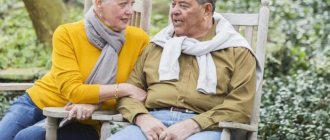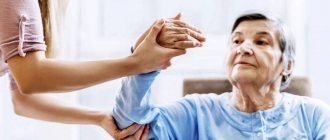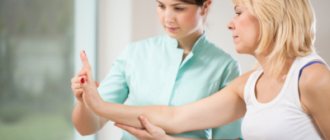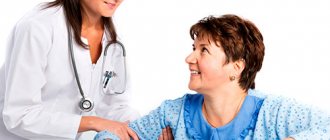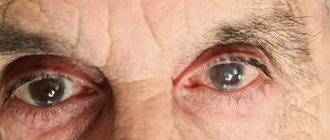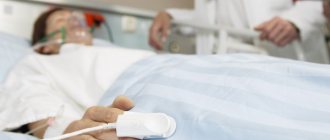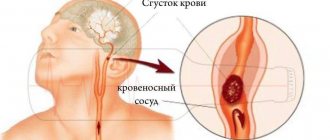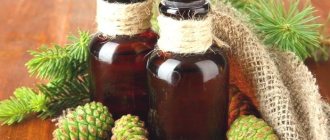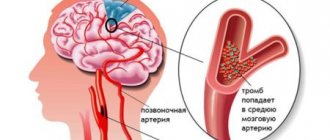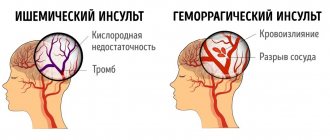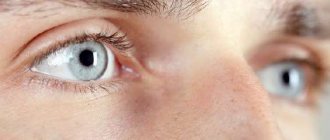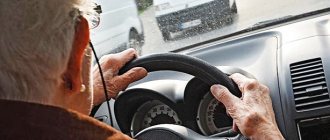Caring for an elderly relative is a huge challenge for all family members. In addition to health and mood problems, situations often arise when a grandfather or grandmother does not eat anything and sleeps constantly. At first, loved ones may not pay attention to this, but poor appetite, increased sleepiness and refusal to eat in older people are a serious cause for concern. In order to prevent the illness from becoming chronic, you need to start taking measures as early as possible and immediately contact a specialist.
What should the diet be like?
It should be noted right away that the diet for bedridden patients must comply with the basic principles of proper nutrition, which apply to any person. These include:
- Adequacy. The diet must correspond to the body's energy expenditure.
- Balance. Nutrition should be balanced in essential nutrients.
- Regularity. A certain number of meals per day should be provided.
- Safety. You need to maintain hygiene and be able to distinguish between stale and fresh foods.
In this case, it is necessary to take into account the characteristics of the patient’s body indicated above. Let's look at the basic principles of nutrition for bedridden patients.
Eating protein foods
Getting the right amount of protein plays an important role in diets for bedridden people. Proteins “repair” and build body tissue, including muscle tissue. Protein contains basic building blocks known as amino acids. Our body synthesizes all but nine amino acids, which is why they are called essential. The main sources of protein are:
- fish;
- turkey;
- chicken;
- red meat;
- legumes;
- dairy products (milk, yogurt, kefir, cottage cheese);
- eggs.
Daily intake depends primarily on weight, as well as age and the number of calories burned. Typically, the norm for bedridden patients is 1 g per kilogram of body weight. It may be higher (for example, when bedsores form), but you should not eat too much protein, especially if the patient suffers from kidney diseases. Food for bedridden patients should be balanced in proteins, fats and carbohydrates.
Important: if a patient develops bedsores, his body’s need for nutrients becomes even higher. Thus, protein deficiency negatively affects healing. Every day, a wound can lose more than 50 g of protein with exudate. As a result, patients’ need for this substance increases by one and a half to two times.
Loss of taste and smell after stroke
April 12, 2019
Nutrition is an important component of the rehabilitation program. We'll tell you how to restore your sense of taste and smell, as well as the specifics of your diet after a stroke.
Stroke is a serious pathology with high (up to 32%) mortality and severe consequences for the body. Among them is complete or partial loss of taste and smell. Restoring these functions entirely depends on timely and proper rehabilitation.
Cause of loss of taste and smell after stroke
Scientists at the University of Erlangen (Germany) investigated whether taste may change after a stroke. It was found that in 30% of cases people completely lost the ability to recognize the taste of food, and another 7% of those studied noted a partial loss of taste.
This happened because during an acute cerebrovascular accident, the cortex and subcortical structures of the brain were damaged, responsible for a number of functions - movement, hearing, vision, tactile sensations. This means that the ability to process information coming from taste and olfactory receptors has been lost.
After 4 months of continuous observations, the situation improved significantly - the majority of patients regained their sense of taste and smell.
The danger of loss of taste is that a person ceases to distinguish between food that is unsuitable for consumption. May eat food that is too salty (which goes against the recommendations for diet during the rehabilitation period), which has spoiled, which threatens poisoning.
Often you lose your appetite because the dish doesn’t seem salty/sweet enough or has an off-flavor.
This, in turn, can lead to an eating disorder and socialization problems: a person refuses to cook food, go to a cafe, or communicate with loved ones over lunch.
Loss of the sense of smell is no less dangerous: if the room is filled with smoke, a person will not be able to quickly recognize the threat in order to go out into fresh air. It is also unable to detect the smell of a gas leak.
Therefore, during the rehabilitation period, it is very important not to leave the patient unattended for a long time in order to react in time to a situation that poses a danger to his health and life.
How to restore taste after a stroke
There is a medical term for the loss of taste and smell - agnosia. Its full or partial development depends on the degree of damage to areas of the brain.
It happens that the patient has lost taste on only one side of the tongue or hears only pungent odors. In such cases, the process of receptor restoration is reduced to 2-3 weeks - almost simultaneously with the ability to swallow and chew food.
With complete taste and olfactory agnosia, the return of sensations will take longer.
The complex of rehabilitation measures to restore lost brain functions includes:
- taking medications;
- therapeutic exercises, massage;
- static loads, exercises on special simulators;
- classes with a speech therapist, psychologist;
- correction of the daily routine - rest time, physical activity, frequency of meals;
- diet.
During the recovery period, physiotherapy is effective: mud therapy, electrical myostimulation of the limbs, laser treatment.
Magnetic therapy - stimulation of the cerebral cortex with magnetic impulses penetrating through bone, muscle and cartilage tissue - will help get rid of agnosia and restore taste and smell.
The procedure is painless and has proven effectiveness: more than 22% of patients after a course of magnetic therapy experienced a persistent decrease in agnosia of various types.
The basic principle of rehabilitation after a stroke is a simultaneous and complex effect on the body so that the lost functions return simultaneously. If possible, it is advisable, after discharge from the hospital, to go to a specialized institution - a rehabilitation center or sanatorium.
Medical restoration of taste and smell
If your sense of taste and smell return slowly, you can speed up the process by taking medications. But it should be understood that only the attending physician can prescribe any drug during post-stroke rehabilitation. Otherwise, there is a risk of deterioration in health or side effects.
Medicines that stimulate saliva production will help restore the taste of food. In order for the brain to receive a signal from the receptor about the taste of the product, it must first be dissolved in saliva.
And if there is not enough of it, the ability to distinguish between flavors suffers. The most convenient way to moisturize the oral cavity is with a spray - simply by spraying it in your mouth a few minutes before eating.
Mouthwashes with antibacterial and moisturizing effects will also help prevent dry mouth.
For long-term taste and olfactory agnosia, it makes sense to conduct additional research. Perhaps the loss of taste after a stroke occurred due to concomitant diseases: fungal infections, lack of vitamins, viral infections, neuroses, etc. Then a set of measures should be aimed at eliminating the cause of the disease.
If the patient has to be re-taught to distinguish the tastes and smells of food, then the dishes should have a pronounced flavor. During cooking, you can add a little more mild but aromatic spices, lemon, ginger.
Weight loss after stroke
In patients who have suffered an acute cerebrovascular accident, swallowing functions may be affected due to muscle paralysis. Until they are restored, a person is forced to eat food crushed to a soft consistency, or nutritional mixtures. As a rule, these are low-calorie dishes, and therefore the patient may experience weight loss.
The physiological norm for weight loss during dietary nutrition should not exceed 10% of the initial weight per month. If this value is greater, you need to increase the calorie content of the menu.
But do not forget that obesity is considered one of the causes of stroke. Therefore, if the patient is overweight, it is extremely important to bring the weight back to normal. For this purpose, diet is included in the complex of rehabilitation measures. It will help you lose weight and reduce the risk of repeated episodes of acute cerebrovascular accident.
Nutrition after stroke
The basic rules for creating a diet during the rehabilitation period correspond to the principles of healthy nutrition. You should limit the consumption of fried and smoked meats, giving preference to the following types of food processing:
- cooking;
- stewing;
- baking;
- blanching.
The consistency of food should be consistent with a person's ability to chew and swallow. For bedridden patients, food is pureed and vegetable and meat broths are boiled. If the ability to swallow is completely lost, food is administered through a tube. After the swallowing function returns, you can gradually increase the density of food - make jelly, give boiled vegetables, pureed meat.
The following should be excluded from the diet:
- fatty types of meat and fish;
- products with an abundance of synthetic additives, flavor enhancers, dyes;
- dishes with a lot of salt, hot spices;
- alcohol.
The norm of salt consumption is 5 g per day, meat - 120 g per day three times a week, vegetables - 400 g per day daily, fish and seafood - 120-150 g per day every 3-4 days. You should also control the amount of fluid (including soups, compotes, juices, tea/coffee and water) - approximately 2 liters per day.
Meals should be fractional - 5 meals a day, that is, consist of breakfast, lunch and dinner and two snacks. It is important not to overeat, not to take long breaks between meals, and not to start physical activity immediately after eating.
____________________
Despite the complexity of the recovery period after a stroke, the loss of smell and taste from food, establishing a patient’s diet is one of the main tasks to support his health. It should be remembered: with the right approach to rehabilitation, you can restore lost brain functions and return to a full life.
Source: https://stop-insult.ru/news/259_poterya_vkusa_i_obonyaniya_posle_insulta
Calorie sufficiency
To prevent weight gain, the diet should contain fewer calories than the diet of a physically active person. Low-calorie foods include fresh fruits and vegetables, whole grain cereals (boiled and liquid), lean meats, and low-fat or low-fat dairy products. Moreover, they should be the basis of any person’s diet according to WHO recommendations. Eating adequate calories reduces the risk of developing overweight or obesity, two factors that can lead to heart disease, hypertension and/or high blood sugar. However, many bedridden patients have poor appetite - in such cases, on the contrary, it is difficult to achieve the norm of calorie intake.
Briefly about the disease
To better understand the role of diet, briefly about the pathogenesis and etiology of the disease. Stroke is an acute disorder of cerebral hemodynamics caused by the cessation of oxygenation of certain areas of the cephalic region. As a result, oxygen starvation of the neurons in these areas occurs and their necrosis (death).
There are two types of stroke:
- ischemic - caused by thrombosis of the lumen of the vessel or its blockage with a cholesterol plaque;
- hemorrhagic - bleeding into the brain or between its membranes, the resulting swelling compresses the blood vessels.
Main etiological factors:
- arterial hypertension:
- thrombosis and/or deposition of atherosclerotic plaques on the walls of cerebral vessels;
- chronic cardiovascular pathologies;
- endocrine diseases;
- obesity;
- physical inactivity;
- excessive consumption of alcoholic beverages, psychoactive and other medicinal substances, smoking.
Availability of healthy fats in the diet
Don't forget about fats. They are required for the normal functioning of the human body. It is recommended to give preference to unsaturated fats (found in fish, some vegetable oils) rather than saturated fats found in meat, dairy products, etc. (but they should not be completely excluded). Unsaturated fats have many beneficial effects - they have a beneficial effect on the cardiovascular system, improve sleep and brain function. They also help strengthen bones that are weakened by lack of physical activity. Sources of healthy fats include salmon, sardines, cod, flaxseed oil, etc.
Important! Coordinate your diet with your doctor, ask what you can feed and what you cannot feed. Some products may interfere with the effects of medications or cause allergic reactions.
Diet composition
What can you eat after a stroke? Products containing the following substances:
| Substance name | Action | Where is it contained? |
| Vitamins B, C, D | Helps reduce homocysteine levels, which provoke a recurrent stroke | Asparagus, wheat germ, sunflower, nuts, broccoli, spinach, carrots, corn, legumes |
| Polyunsaturated omega-3, omega-6 acids | Participate in biochemical processes in the brain, improve hemodynamics. | Sea fish, seafood (eicosapentaenoic and docosahexaenoic acids), vegetable oils (linolenic acid). |
| Folic acid | Reduces blood pressure and prevents possible relapse. | Legumes, various types of cabbage (except white cabbage), asparagus, carrots, corn, pumpkin, celery, lettuce, lentils, citrus fruits. |
| Microelements calcium, phosphorus, potassium, magnesium, iron | Normalize metabolism and have a strengthening effect. | Potatoes, tomatoes, bananas, garlic, citrus fruits, dried fruits, rice, oatmeal, cabbage, bran bread, nuts, beef. |
| Squirrels | Promotes speedy recovery and strengthens the body. | Dietary lean meats |
| Anthocyanidins | Reduce capillary permeability | Blue and purple vegetables and fruits (eggplants, plums, dark grapes, plums, beets, red cabbage). |
| Beta-carotene | Decreases A/D. | Vegetables and fruits of red and yellow color - carrots, red bell peppers, pumpkin, apricots. |
| Vitamin E | Antioxidant properties (removes free radicals, normalizes metabolism). | Sea fish, soy, dairy products, herbs, vegetable oils. Antioxidants are found in all types of cabbage, cranberries, blueberries, spinach, and beets. |
| Complex carbohydrates | They normalize energy metabolism, reduce cholesterol levels, promote neuronal repair, and give a feeling of satiety. | Cereals – buckwheat, barley, oatmeal, cereals, zucchini, apples, brown rice. |
Vitamins and minerals
Patients who consume insufficient amounts of food may experience a deficiency of vitamins, macro- and microelements, which is fraught with negative health consequences. For example, low hemoglobin levels (due to iron deficiency) are associated with the development of bedsores and slower wound healing due to decreased oxygen content in the tissues. Zinc deficiency also impairs healing by reducing the rate of protein synthesis and wound epithelialization. Therefore, vitamin and mineral supplements can be included in the diet of patients (after consultation with a doctor). Overconsumption of any one mineral or vitamin should be avoided as it may interfere with the absorption of other substances and cause side effects.
Consequences of a stroke
A stroke leads to disruptions in the functioning of the brain, certain parts of it stop working and body functions suffer. Life after a stroke will change for both the patient and his loved ones.
A common consequence of a stroke is complete or partial paralysis of the limbs. Often this affects one side of the body, opposite the hemisphere in which the stroke occurred. The degree of damage is sometimes expressed by a slight loss of coordination and clarity of movements, to the complete inability of half of the body. Other disorders may be associated with disturbances in the functioning of the limbs, for example, loss of sensitivity; a person may “forget” that he has a hand or stop feeling its position in space.
Another common problem after a stroke is speech impairment. It is associated with partial paralysis of the facial muscles or disruption of the speech center; speech may become incoherent; the person will understand what is being said to him, but will not be able to normally reproduce speech structures himself.
Stroke is also accompanied by psychological problems and mental disorders. A person who has suffered a stroke suffers from depression and apathy, and becomes aggressive or moody.
Not Recommended Products
We've figured out what bedridden patients can eat. What products are not recommended to be included in the menu? These are sausages, smoked meats, instant products, store-bought ketchups and sauces, chips, crackers, etc.
Food should not contain trans fats, which impair immunity, increase cholesterol and generally have a negative effect on health. In products, trans fats are designated as vegetable hydrogenated fats. They are found, for example, in fast food, margarine, baked goods with margarine, and spreads.
It should also be taken into account that for certain diseases there are restrictions on the consumption of even the “right” foods (for example, sour juices are not allowed for acute ulcers).
After a stroke I lost my appetite, what should I do?
Main areas of outpatient clinical practice (diagnosis and treatment):
- on-site medical neurological consultations – specialized neurological care for adults at home;
- headache;
- degenerative-dystrophic diseases of the spine
- vegetative-vascular dystonia;
- sleep disorders;
- adaptation disorders (anxiety, depression, chronic fatigue);
- consequences of strokes, cerebrovascular diseases.
- consequences of traumatic brain injury;
- paroxysmal disorders of consciousness (epilepsy, drop attacks, fainting);
- dementia (Alzheimer's disease, vascular dementia, dementia with Lewy bodies, etc.);
- extrapyramidal diseases (Parkinson's disease, tremor, dystonia);
- neuralgia (trigeminal neuralgia, etc.);
- polyneuropathy (alcoholic, diabetic, etc.);
- tunnel syndromes (carpal tunnel syndrome, etc.);
- neuromuscular diseases.
- dizziness;
- other diseases of the nervous system
Specialist in botulinum therapy (drug Xeomin):
- Treatment of all neurological diseases manifested by spasticity (consequences of strokes, cerebral palsy, multiple sclerosis, consequences of traumatic brain injury, consequences of encephalitis)
- Treatment of dystonia (all types)
- Treatment of pain syndromes (painful stumps, migraine, severe myofascial pain due to DDSD, neuropathic pain)
- Hyperhidrosis (excessive sweating) of the forehead, armpits, palms, feet
- Uncontrollable drooling
Member of scientific communities:
- Neurological Society “Neuronews”
- Russian Interregional Society for the Study of Pain
- Man and health. 2006
- Epileptology at the intersection of sciences: psychiatry, neurology, clinical psychology. . 2013
- Disorders of cognitive functions in children and adolescents. 2013
- Current issues in occupational pathology. Basic concepts of examination – 2014.
- Long-term consequences of birth trauma. 2020
- Modern approaches to the treatment of pain syndromes. 2020
- Specialist in the use of botulinum toxin (botulinum therapist). 2020
source
Diet
The classic three-a-day diet of an ordinary person is not suitable for a bedridden person. Typically, such patients eat little and are not able to consume in one sitting the amount of food that the body needs. You should try not to force feed, but to stimulate the appearance of appetite. The diet should include about 6 meals. What to feed a bedridden patient? Products should be selected taking into account the principles described above, the doctor’s recommendations and the patient’s wishes.
One more point: the food should be warm (not cold or hot). Hot food can burn the mucous membranes, and cold food can lead to colds due to weakened immunity.
Sample menu for the day
For an approximate daily menu for bedridden patients, see the table below.
| Eating | Main course | Dessert | Drink |
| Breakfast | Liquid porridge (oatmeal, buckwheat, millet) with nuts and berries | Mashed banana | Compote |
| Lunch | Mashed low-fat cottage cheese with dried fruits | Freshly squeezed carrot juice | |
| Dinner | Vegetarian soup, cabbage rolls or steamed cutlets | Fruit or milk jelly | |
| Afternoon snack | Vegetable salad with olive/linseed oil | ||
| Dinner | Mashed or boiled porridge with butter | Casserole (can be cooked in the oven or steamed), baked apple | |
| Two hours before bedtime | Low-fat kefir |
What is contraindicated
People caring for a patient need to remember not to eat or drink after a stroke.
Table of prohibited products
| Group | Products |
| animal oils | butter, margarine, lard, lard, fat tail |
| fatty foods | sausages, ham, bacon, casseroles, pies |
| dairy products with a high percentage of fat | sour cream, cream, cheeses, yoghurts, fermented baked milk |
| products containing cholesterol, palm kernel, coconut oils, trans fats | ice cream, fast food, cookies, chips, egg yolks |
| spicy, salty, marinated dishes | any |
| mushrooms | any |
| sweet products | cakes, pastries, jams |
| beverages | alcohol, coffee, dark tea, energy drinks |
| roast | french fries, lamb, pork, chicken, fish, pies, scrambled eggs |
Failure to follow these recommendations may invalidate all achieved treatment results.
Feeding process, patient position
Bedridden patients are not able to take care of themselves. They need help washing their hands (if this is difficult, then at least disinfect them with special means or napkins). Patients may drop food, so place a tablecloth or towel on the bed before eating. It is necessary to ensure that crumbs do not fall on the bed. They can cause bedsores.
How to feed a bedridden patient? Before starting a meal, he needs to be seated in bed or raised slightly. Feeding while lying down is dangerous because the patient may choke or choke. If it is difficult for him to hold his head, it is necessary to hold it in an upright position.
The spoon should be filled 2/3 full to avoid spilling food. You need to feed slowly. The spoon is first brought to the lower lip so that the patient can smell the dish. As for drinking, if the patient is unable to drink from a cup, you need to use sippy cups or give liquid from a dessert or teaspoon.
Risk factors for stroke
There are well-known factors that can be precursors of a stroke:
- High blood pressure
- Smoking, including passive smoking
- Diabetes
- Elevated cholesterol levels
- Low level of physical activity (less than 30 minutes per day)
- Obesity
- Heart rhythm disturbance
- Excessive alcohol consumption
But there is another factor that is not listed here. And, in my opinion, he is the most dangerous. Because even if all of the above factors are absent, it can lead to a stroke.
And his name is STRESS.
I'll tell you a few real stories that happened recently that confirm this statement.
I'll probably start with myself. Many of you know my story of miraculous recovery, but few know the latest news from my life. I better introduce myself)
Stroke, story No. 1. Personal... My name is Alina and I am almost 36 years old. I have been leading a healthy lifestyle for 15 years now, constant prevention, cleansing the body, support with all sorts of dietary supplements, and moderate physical activity. All indicators are normal, all tests are perfect.
One thing: from the first days of pregnancy, my relationship with my husband deteriorated. After the birth of the child, everything got worse: lack of sleep at night, plus constant nervous stress. And there is also a financial crisis from above. The last six months before the stroke were very difficult: I slept 4 hours a day, worked seven days a week.
I won’t describe everything that still fell on top, but as a result of such a life, I suffered a stroke. Moreover, I’m smart myself, I teach others, but I didn’t recognize my stroke. We always think that this cannot happen to us, especially when you are 34 and all the tests are perfect. It’s just that during the “debriefing” my vision darkened, a sharp pain in my head, tinnitus, my vision darkened, the ground began to disappear from under my feet….
With the last of my strength, I remained conscious, walked to the counter with capsules (yes, I have one, there are essential dietary supplements and herbal capsules and what I and my family are drinking now - so as not to forget), and drank a “shock” dose astaxanthin and mucuna pruriens. I thought it was stress, this has happened to me. And after that she went to bed.
Read also: Stroke symptoms and first aid
I woke up with strange sensations in my right arm and leg. Pain in the center of the foot and arm, unpleasant numbness. “Smart,” she also chalked it up to stress. All my friends who had a stroke were over 60 and did not lead a very healthy lifestyle (drank, smoked). In general, I was sure that the stroke was not about me. It can't be about me. No way.
I continued to drink mucuna and astaxanthin, and a week later I went to see a massage therapist. Ours, Russian. And he, starting to examine me, turned pale and covered with large drops of sweat: “Do you know what happened to you? It was most likely a mini-stroke! If you don’t stop being nervous, you’ll be fully functional!”
By the way, another test: if you stick out your tongue after the “hit”, it will deviate to the side.
The massage therapist also said that it was too late to go to the hospital: the time when something could be done to prevent serious consequences was only 3-4 hours. I then checked in different sources, and this is so. He recommended that I continue to do what I was doing, since I had not recovered well.
Formula feeding
Some patients suffer from severe dysphagia, i.e. swallowing disorder. In such cases, special mixtures are used for feeding, such as Nutridrink, Nutrizon and Modulen. The doctor should consult caregivers and recommend the most appropriate product (low-calorie or high-calorie, with or without fiber, gluten or lactose, etc.). The mixture can be given from a spoon, in a bottle or sippy cup. In case of very severe dysphagia, unconsciousness, injuries of the esophagus and larynx, stroke and some other situations, feeding of bedridden patients is carried out through a tube.
If the patient can eat regular food, the mixtures can be used as a dietary supplement.
Sample recipes
While a loved one is undergoing treatment in a hospital after an ischemic stroke, you should prepare in advance for subsequent recovery from the illness at home. This is not only a comfortable bed, mobility aids (walkers, chair), but also care about proper nutrition. You need to not only learn what is healthy to eat, but also learn how to cook deliciously. Several options for culinary recipes will help you figure out how to make food tasty.
First meal
Soups must be present in the diet of a patient after an ischemic stroke. It is recommended to cook with vegetable or weak meat (fish) broth.
Chicken soup
- chicken breast fillet;
- wholemeal noodles;
- bulb;
- carrot.
- prepare broth from meat;
- Remove the finished chicken and chop finely;
- add noodles and chopped meat to the broth;
- chop the vegetables and sauté over low heat;
- When the noodles are cooked, add the vegetable mixture and cook for 3 minutes.
You can add finely chopped fresh herbs to the finished soup.
Zucchini cream soup
It can be prepared with meat broth, but it is better to use vegetables to prepare the soup base.
- put diced potatoes into boiling water (broth);
- chop the onion and carrots and sauté in vegetable oil;
- when the potatoes are cooked until half cooked, add sautéed onions and carrots, peeled and diced zucchini to the pan;
- cook until vegetables are ready;
- Remove the pan from the heat and puree the soup with a blender.
Add greens to the finished soup.
Second courses
Despite the fact that the recommendations on how to eat after a stroke say food needs to be chopped, and there is room for imagination.
Fish balls
- minced fish (it’s better to take cod);
- cereals;
- egg.
- Pour boiling water over the flakes and leave until they swell;
- mix minced meat, oatmeal and egg;
- Form into balls and cook in a double boiler or saucepan.
Sprinkle with herbs before serving.
Chicken meatballs
- mix all ingredients;
- form balls;
- put in a deep frying pan and fill half with water;
- simmer until done.
The broth obtained when preparing meatballs can be used as a gravy, adding sautéed onions and chopped herbs to improve the taste.
Porridge, mashed potatoes or stewed vegetables are suitable as a side dish.
Dessert
After an attack of acute cerebral ischemia, baking and baking are prohibited. But you can cook sweet casseroles.
Curd casserole with dried apricots
- rinse dried apricots, scald with boiling water and cut;
- mix all components;
- Place the resulting mixture in a mold and bake in the oven.
Before serving, sprinkle with sour cream.
You can find other similar recipes from products approved for ischemic stroke.
